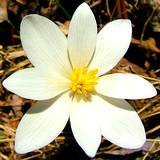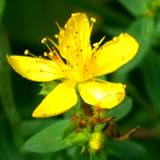|
Grandma's Herbal Health Remedies
Millions of people use herbal health remedies regularly in the belief that they are a good source of important elements either missing or greatly diminished in modern diets. People usually take the herbs in encapsulated powders, concentrated liquids or teas. Herbs are plants that connect us to the past, present, and future. We associate herbs with:
In the past many herbs were used as foods. At one time dandelions, burdock, marshmallow, comfrey leaves and alfalfa were served at mealtime. Unfortunately, many of these wonderful plants have lost favor in the eyes of modern people whose tastes became accustomed to an unwholesome, highly refined regimen. For example; alfalfa is a rich source of many trace minerals. The plant contains potassium, calcium and magnesium with smaller quantities of phosphorus, sulfur, copper, cobalt, molybdenum, iron, boron, sodium, fluorine, chlorine and strontium. Alfalfa is also a source of vitamin K, vitamin D, vitamin C, vitamin E, pro-vitamin A (beta carotene), folic acid, thiamine, riboflavin, pantothenic acid and niacin. Pyridoxine and choline are also present in varying amounts. That's' not all. Alfalfa contains flavonoids, lipids, chlorophyll, volatile oils, proteins, sugars, starches, organic aids, alkaloids, and saponins. It's a good source of fiber too. Every one of these elements is processed in the human body, even if the required amount is minute. Alfalfa is just a small example of herbal health remedies. Imagine what health benefits people all over the world could accomplish by sharing, comparing, and offering their knowledge of the herbs used in their cultures. If only we could gather this knowledge in one place, one herb at a time.
Grandma's Herbal Remedies Guide
America
|
What is an Herb?
From the earliest times, humans have divided plants into two groups, the useful and the not useful, the former being the broadest definition of an herb. Those regarded as useful depend on the environment and society in which one lives - an Amazon healer might consider 500 plants to be useful, and therefore "herbs," whereas a city dweller might know only 5 plants useful. Thus, "herb" is a cultural rather than a botanical definition.
Most people assume herbs are annual or herbaceous plants, such as Basil, or perhaps Ginseng, but in fact herbs span the breadth of the entire plant kingdom, herbs are found among mosses, ferns, conifers, and even algae, as well as the more familiar higher flowering plants.
As you explore Grandma's Herbal Health Remedies you'll quickly discover exactly what kind of health benefits each herb provides and how, very much like the systems of the human body, herbal health benefits actually depend on the combination of other herbs to achieve maximum support. At times you may need to drink a simple cup of tea to bring balance to your stressful life, other times you may need to combine several herbs and remain consistant for a period of time before you notice results.
Return from Herbal Health Remedies to Grandma's Herbal Health Benefits Home








